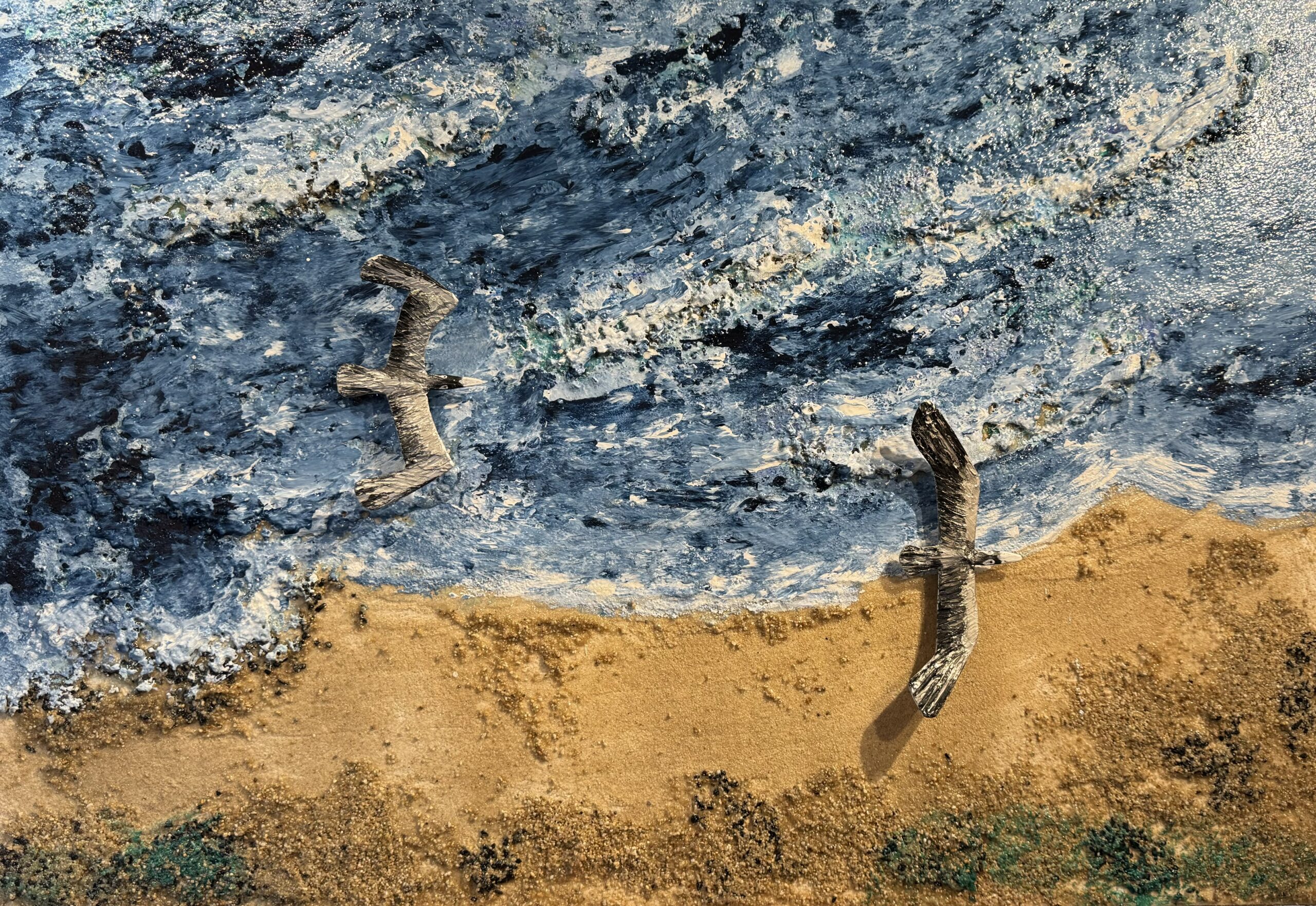Initially, I used the fascinating possibilities of watercolors to paint my paintings. Sometimes these were landscapes in Sweden, Italy, and France, but soon I also began to paint abstract works, whether in postcard format or on square Torchon paper. Pastels, charcoal, and colored pencils supplemented my equipment.
Starting in 2014, I expanded my repertoire to include acrylic paints and soon also various materials that give the artworks a special structure or create a visual or even tactile effect: sand, charcoal, pebbles, even gemstones, bamboo, insulating granules, aluminum foil, mica, special pastes with targeted effects, iridescent paints, metallic paints, whether in watercolor or acrylic techniques, and steel sheets combined with magnets. The latter allows for the creation of interactive artworks in which the viewer can reposition individual objects.
As an example, here's the painting "West Palm Beach." The two birds can be placed anywhere on the artwork. They are held in place by strong magnets. The painting was painted on a wooden base and backed with a thin sheet of steel.

The painting tools and aids used include, of course, brushes in various shapes and sizes, spatulas, notched trowels, sponges, paint rollers, cardboard and foil for the rubbing technique, designer pens, gel pens, watercolors and pencils, spray bottles, wooden sticks, brushes, sieves, masking tape, stencils, rulers, curve rulers, compasses, etc.
As a painting surface, in addition to paper, I naturally use canvas, wooden painting surfaces, cardboard, MDF boards.
I am excited and open to new opportunities that will arise as the development progresses.
